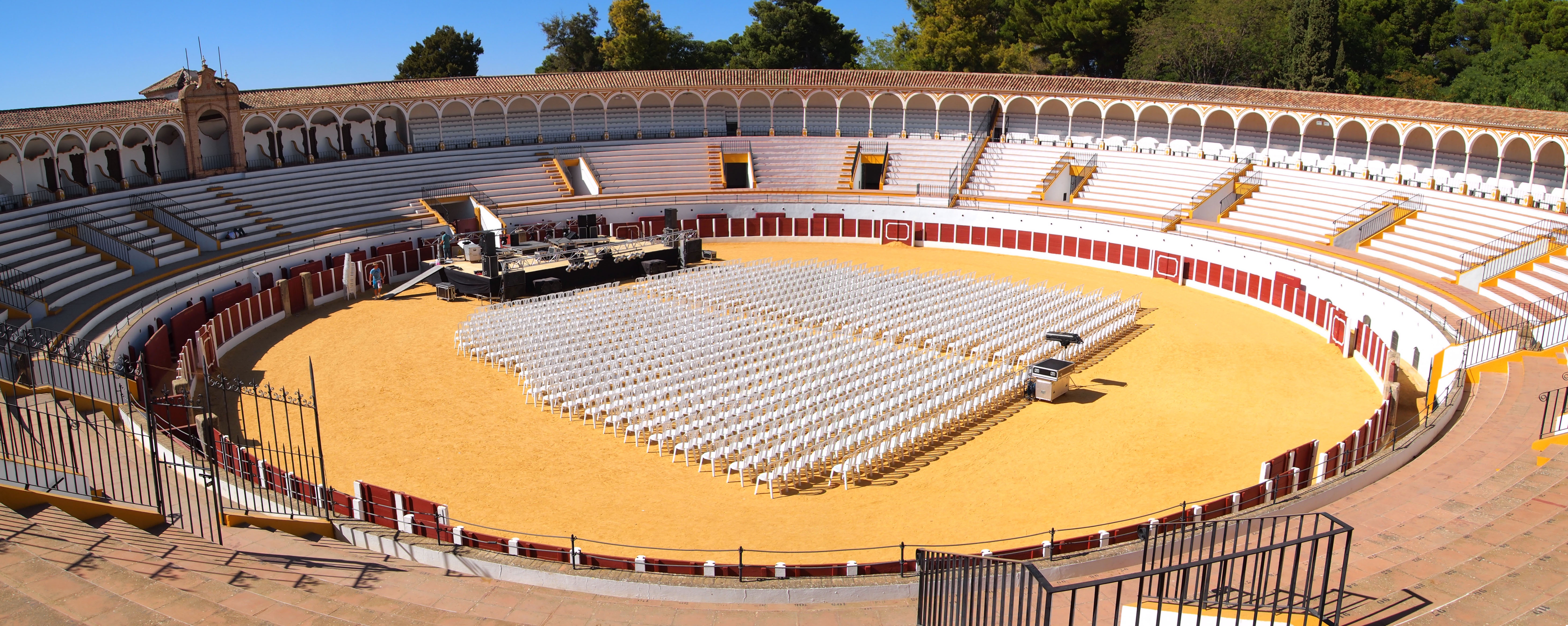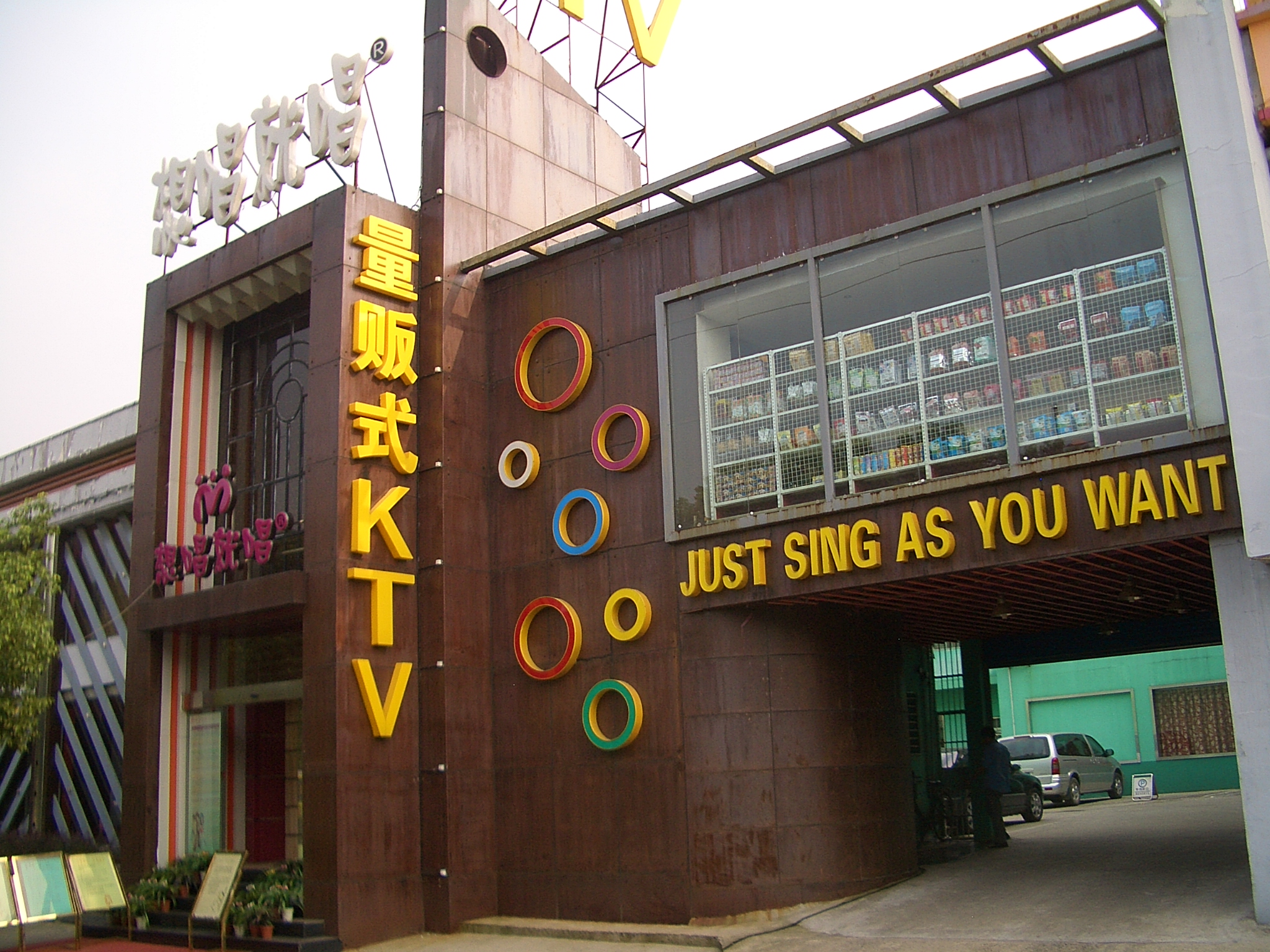|
Convento De La Magdalena
Convento de la Magdalena was a convent, now a hotel, situated to the southwest of the town of Antequera, Province of Málaga, Spain. Its history was known through the translation of an 18th-century monk's manuscript. In 2009 it was converted into a luxury hotel, known as the Hotel Convento La Magdalena, with 21 rooms. Olive groves and mills in the vicinity reflect the occupation of people in the area. A stream, Arroyo de la Magdalena, flows nearby. History The convent was established in 1570 by the merchant, Ildefonso Alvarez, who possessed an altarpiece of the Virgin Magdalena. Alvarez took refuge in the area's caves and lived like a hermit. In the following three years, he struggled to pay his debts and eventually attracted the attention of the Christian community who helped him. In 1585, construction started on a small chapel in the area. In 1648 the place became renowned for the healing from the plague by Father Cardenas, a pastor of Seville who had journeyed to the little ch ... [...More Info...] [...Related Items...] OR: [Wikipedia] [Google] [Baidu] |
Convent
A convent is an enclosed community of monks, nuns, friars or religious sisters. Alternatively, ''convent'' means the building used by the community. The term is particularly used in the Catholic Church, Lutheran churches, and the Anglican Communion. Etymology and usage The term ''convent'' derives via Old French from Latin ''conventus'', perfect participle of the verb ''convenio'', meaning "to convene, to come together". It was first used in this sense when the eremitical life began to be combined with the cenobitical. The original reference was to the gathering of mendicants who spent much of their time travelling. Technically, a monastery is a secluded community of monastics, whereas a friary or convent is a community of mendicants (which, by contrast, might be located in a city), and a canonry is a community of canons regular. The terms abbey and priory can be applied to both monasteries and canonries; an abbey is headed by an abbot, and a priory is a lesser depend ... [...More Info...] [...Related Items...] OR: [Wikipedia] [Google] [Baidu] |
Antequera
Antequera () is a city and municipality in the Comarca de Antequera, province of Málaga, part of the Spain, Spanish autonomous communities of Spain, autonomous community of Andalusia. It is known as "the heart of Andalusia" (''el corazón de Andalucía'') because of its central location among Málaga, Granada, Córdoba, Spain, Córdoba, and Seville. The Antequera Dolmens Site is a UNESCO World Heritage site. In 2011, Antequera had a population of 41,854. It covers an area of 749.34 km2 with a population density of 55.85 inhabitants/km2, and is situated at an altitude of 575 meters. There is also a very small town named "Gloriano" in the bottom of Antequera. Antequera is the most populous city in the interior of the province and the largest in area. It is the twenty-second largest in Spain. The city is located 45 km from Málaga and 115 km from Córdoba. The cities are connected by a high-speed train and the A-45 motorway. Antequera is 160 km from Seville ... [...More Info...] [...Related Items...] OR: [Wikipedia] [Google] [Baidu] |
Province Of Málaga
The province of Málaga ( ) is located in Andalusia, Spain. It is bordered by the Mediterranean Sea to the south and by the provinces of Cádiz to the west, Seville to the northwest, Córdoba to the north, and Granada to the east. The province is subject to extreme water stress Water is an inorganic compound with the chemical formula . It is a transparent, tasteless, odorless, and nearly colorless chemical substance. It is the main constituent of Earth's hydrosphere and the fluids of all known living organisms ( ... in the wake of the proliferation of avocado plantations in the Axarquía region, with the arid local climate being unsuitable to the plant's large water demands. Overview The province of Málaga has an area of and a population of 1,652,999 (2013), concentrated mainly in the metropolitan area of Málaga, the provincial capital, and throughout the coastal area. The population density surpasses both the Andalusia and Spanish averages, reaching 222.53 inhab ... [...More Info...] [...Related Items...] OR: [Wikipedia] [Google] [Baidu] |
Mary Magdalene
Mary Magdalene (sometimes called Mary of Magdala, or simply the Magdalene or the Madeleine) was a woman who, according to the four canonical gospels, traveled with Jesus as one of his followers and was a witness to crucifixion of Jesus, his crucifixion and Resurrection of Jesus, resurrection. In Gnosticism, Gnostic writings, Mary Magdalene is depicted as Jesus’s closest disciple who uniquely understood his teachings, causing tension with Saint Peter, Peter, and is honored as the “apostle to the apostles.” Mary Magdalene was a historical figure, possibly from Magdala. She was a prominent follower of Jesus who was believed to have been healed by him, supported his ministry financially, and was present at his Crucifixion of Jesus, crucifixion and burial. She played a key role among his female disciples. Overall, there is limited information about her life. Speculations about Mary Magdalene range from scholarly theories that she was the “disciple whom Jesus loved” in the ... [...More Info...] [...Related Items...] OR: [Wikipedia] [Google] [Baidu] |
Seville
Seville ( ; , ) is the capital and largest city of the Spain, Spanish autonomous communities of Spain, autonomous community of Andalusia and the province of Seville. It is situated on the lower reaches of the Guadalquivir, River Guadalquivir, in the southwest of the Iberian Peninsula. Seville has a municipal population of about 701,000 , and a Seville metropolitan area, metropolitan population of about 1.5 million, making it the largest city in Andalusia and the List of metropolitan areas in Spain, fourth-largest city in Spain. Its old town, with an area of , contains a UNESCO World Heritage Site comprising three buildings: the Alcázar of Seville, Alcázar palace complex, the Seville Cathedral, Cathedral and the General Archive of the Indies. The Seville harbour, located about from the Atlantic Ocean, is the only river port in Spain. The capital of Andalusia features hot temperatures in the summer, with daily maximums routinely above in July and August. Seville was founded ... [...More Info...] [...Related Items...] OR: [Wikipedia] [Google] [Baidu] |
Roman Catholic Diocese Of Málaga
The Diocese of Málaga () is a Latin Church ecclesiastical jurisdiction or diocese of the Catholic Church in Spain. Its episcopal see is the city of Málaga. The diocese is a suffragan diocese in the ecclesiastical province of the metropolitan Archdiocese of Granada."Diocese of Málaga" '' Catholic-Hierarchy.org''. David M. Cheney. Retrieved February 29, 2016"Diocese of Málaga" ''GCatholic.org''. Gabriel Chow. Retrieved February 29, 2016 History * 4 August 1486: Established as Diocese of Málaga Special chu ...
|
Discalced
A discalced (/dɪsˈkælst/, ''dis-KALST'') religious order is one whose members go barefoot or wear sandals. These orders are often distinguished on this account from other branches of the same order. The custom of going unshod was introduced into the West by Saint Francis of Assisi for men and by Saint Clare of Assisi for women. The word is derived from the Latin ''discalceātus'', from ''dis'' ("apart", "away") and wikt:calceatus, ''calceātus'' ("shod"), from wikt:calceare, ''calceāre'' ("to provide with shoes"), from wikt:calceus, ''calceus'' ("shoe"), from ''calx'' ("heel"). Discalceation Discalceation means "removal of footwear". The nuns in the Carmelite reform convents erected by Teresa of Ávila abstained from wearing shoes, and were therefore indicated as ''discalced''. She and St. John of the Cross were the founders of the Discalced Carmelites. The origins of discalceation lie in Book of Exodus, Exodus 3:5, where God tells Moses: "Take off your sandals, for the pla ... [...More Info...] [...Related Items...] OR: [Wikipedia] [Google] [Baidu] |
Franciscan
The Franciscans are a group of related organizations in the Catholic Church, founded or inspired by the Italian saint Francis of Assisi. They include three independent Religious institute, religious orders for men (the Order of Friars Minor being the largest contemporary male order), an order for nuns known as the Order of Saint Clare, and the Third Order of Saint Francis, a Third Order of Saint Francis#Third Order Regular, religious and Secular Franciscan Order, secular group open to male and female members. Franciscans adhere to the teachings and spiritual disciplines of the founder and of his main associates and followers, such as Clare of Assisi, Anthony of Padua, and Elizabeth of Hungary. Several smaller Franciscan spirituality in Protestantism, Protestant Franciscan orders have been established since the late 19th century as well, particularly in the Lutheranism, Lutheran and Anglicanism, Anglican traditions. Certain Franciscan communities are ecumenism, ecumenical in nat ... [...More Info...] [...Related Items...] OR: [Wikipedia] [Google] [Baidu] |
ElBulli
El Bulli () was a restaurant near the town of Roses, Spain, run by chef Ferran Adrià, later joined by Albert Adrià, and renowned for its modernist cuisine. Established in 1964, the restaurant overlooked Cala Montjoi, a bay on the Costa Brava of Catalonia. El Bulli held three Michelin stars and was described as "the most imaginative generator of haute cuisine on the planet" in 2006. The restaurant closed 30 July 2011 and relaunched as El Bulli Foundation, a center for culinary creativity. Restaurant The restaurant had a limited season: the PIXA season, for example, ran from 15 June to 20 December. Bookings for the next year were taken on a single day after the closing of the current season. It accommodated only 8,000 diners a season, but got more than two million requests. The average cost of a meal was €250 (US$325). The restaurant itself had operated at a loss since 2000, with operating profit coming from El Bulli-related books and lectures by Adrià.Carlin, John (11 December ... [...More Info...] [...Related Items...] OR: [Wikipedia] [Google] [Baidu] |
Karaoke
is a type of interactive entertainment system usually offered in nightclubs and bars, where people sing along to pre-recorded accompaniment using a microphone. Its musical content is an instrumental rendition of a well-known popular song. In recent times, lyrics are typically displayed on a video screen, along with a moving symbol, changing colour, or music video images, to guide the singer. In Chinese-speaking countries and regions such as mainland China, Hong Kong, Taiwan and Singapore, a karaoke box is called a KTV. The global karaoke market has been estimated to be worth nearly $10 billion. Karaoke's global popularity has been fueled by technological advancements, making it a staple of social gatherings and entertainment venues all over the world. The precursors of karaoke machines using cassette tapes made their first appearances in Japan and the Philippines in the 1970s. Commercial versions manufactured by Japanese companies using LaserDisc became available world ... [...More Info...] [...Related Items...] OR: [Wikipedia] [Google] [Baidu] |







